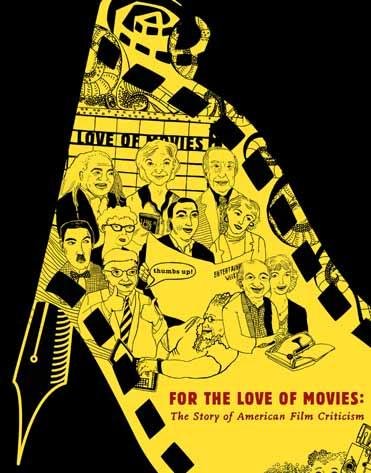Full disclosure: Gerald Peary’s 80-minute documentary accords me two sound bites — one near the beginning (about Manny Farber), the other towards the end (about internet criticism) — and one lingering look at this web site (specifically, my 2005 essay about Susan Sontag).
Overall I’m fundamentally in agreement with David Bordwell’s verdict about this film on his own web site, after seeing it recently in Hong Kong: “In all, For the Love of Movies offers a concise, entertaining account of mass-market movie criticism, and I think a lot of universities would want to use it in film and journalism courses.”
I’m writing this in one-sentence paragraphs because that’s pretty much Gerry’s discursive style and manner here, largely carried by the narration (delivered by Patricia Clarkson), for better and for worse. So — to expand my own discursive style here into two sentences, one of them fairly long — in the two or three minutes devoted to Manny Farber, unless you’ve already read and digested a couple of his key articles, you might wind up concluding that “termite art” has something directly to do with “low-budget crime melodrama,” even though snippets of Farber’s prose and a couple of lines from a late onstage interview are also included.
My biggest single objection is to one chapter heading — “When Criticism Mattered (1968-1980)” — which I read as a generational marker of sorts (even though it’s worth stressing that Andrew Sarris’s The American Cinema and Pauline Kael’s I Lost it at the Movies, unlike Farber’s Negative Space, both made their first appearances before 1968). Gerry belongs to the same generation as me, but there’s a world of difference in how the two of us relate to this fact.
My own experience, for whatever it’s worth, is that criticism matters a great deal to some young hard-core cinephiles today, and in very much the same way that criticism mattered to some young hard-core cinephiles between 1968 and 1980. Among the key differences are the facts that this criticism is often found today in different places (i.e., on the Internet and much less often in libraries), that there’s considerably more of it (including academic stuff, omitted from Peary’s survey), that whether or not it’s American is of little consequence (though whether or not it’s in English is vital), and that it’s about many more films than anyone could have possibly had access to between 1968 and 1980.
Most mainstream moviegoers tend to think that film criticism is basically a matter of telling you which movies you should see, not trying to direct or redirect how you think about them. There’s a little in this documentary that contradicts this premise, but not a lot.
That said, this movie is a lot of fun. And you should see it. [4/16/09]


